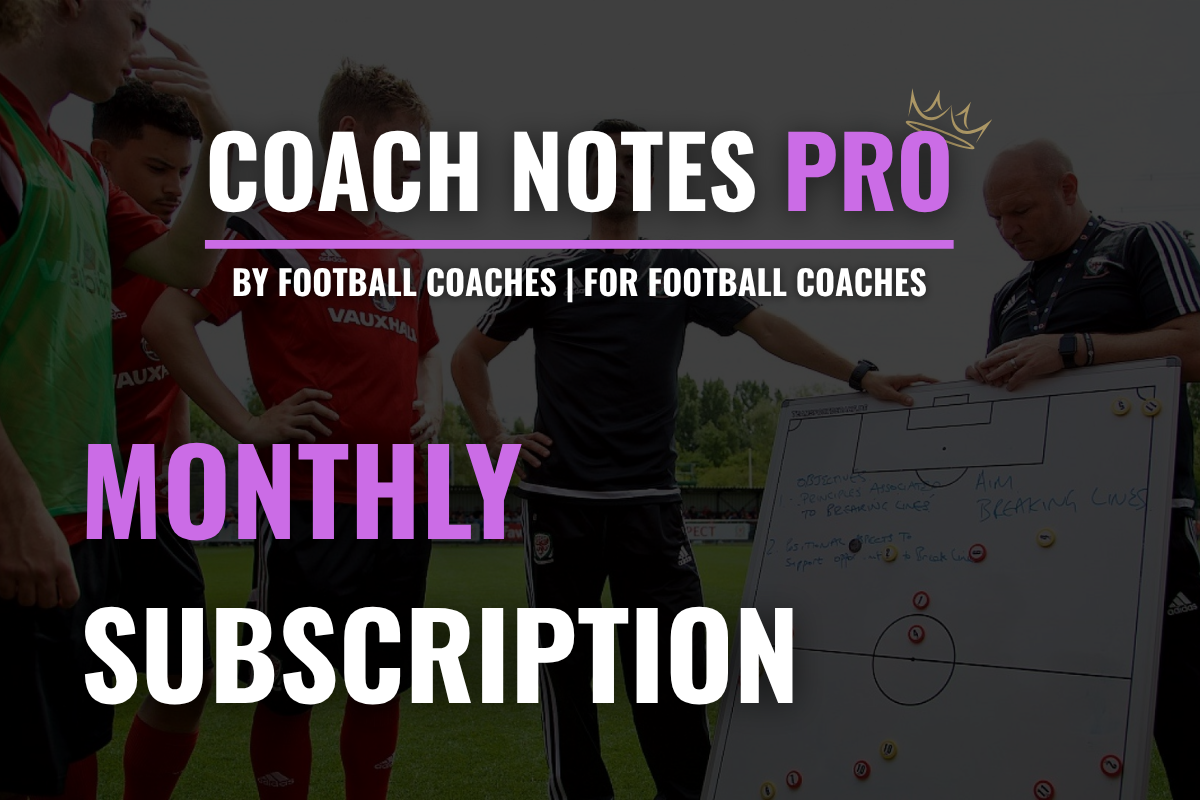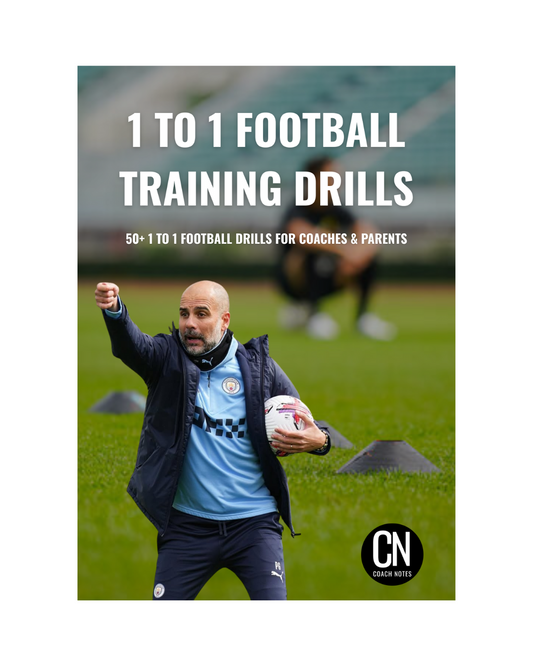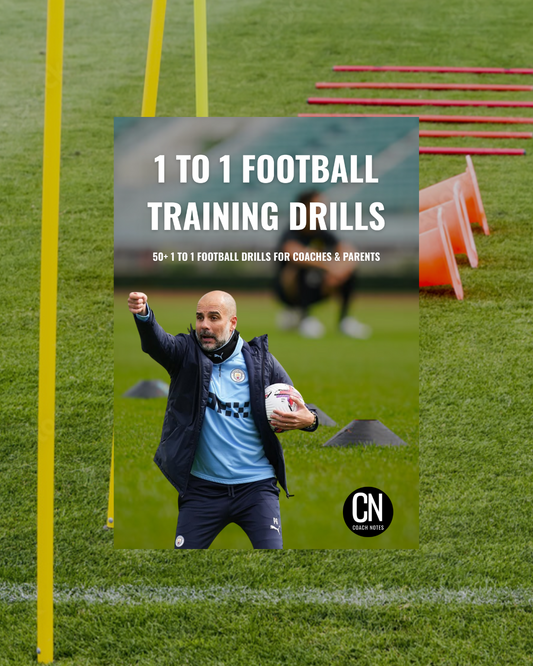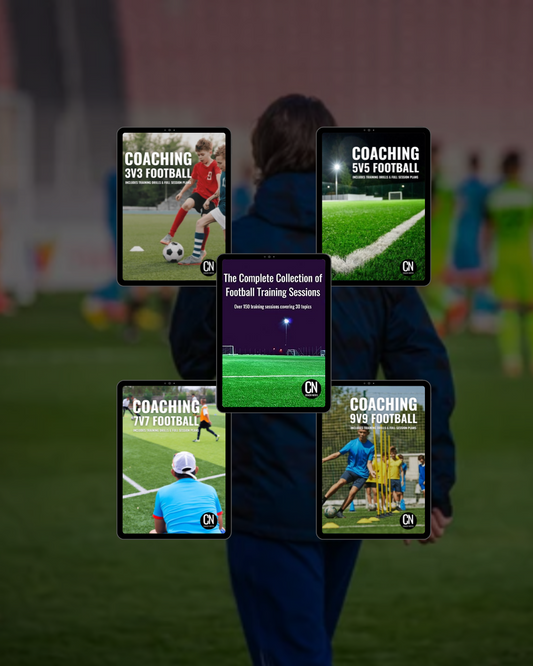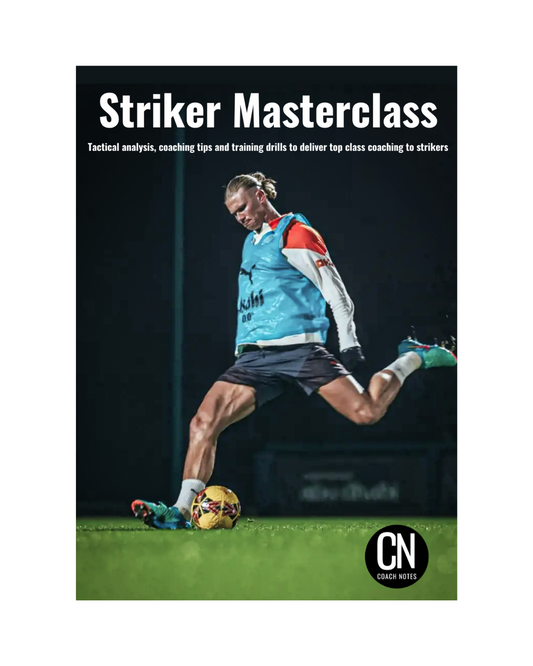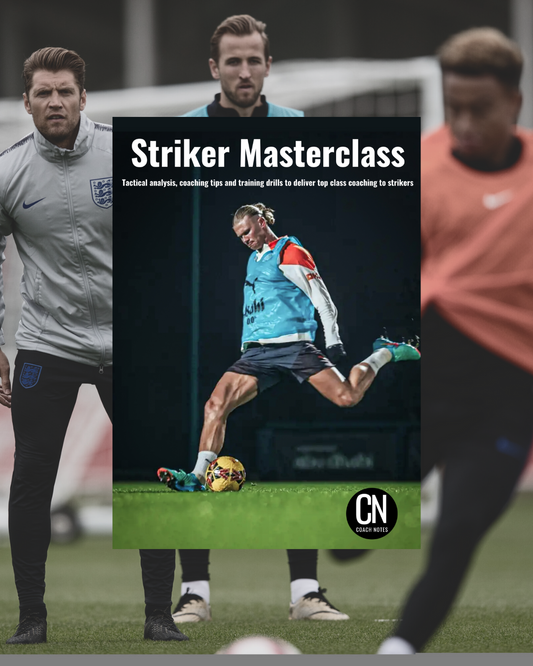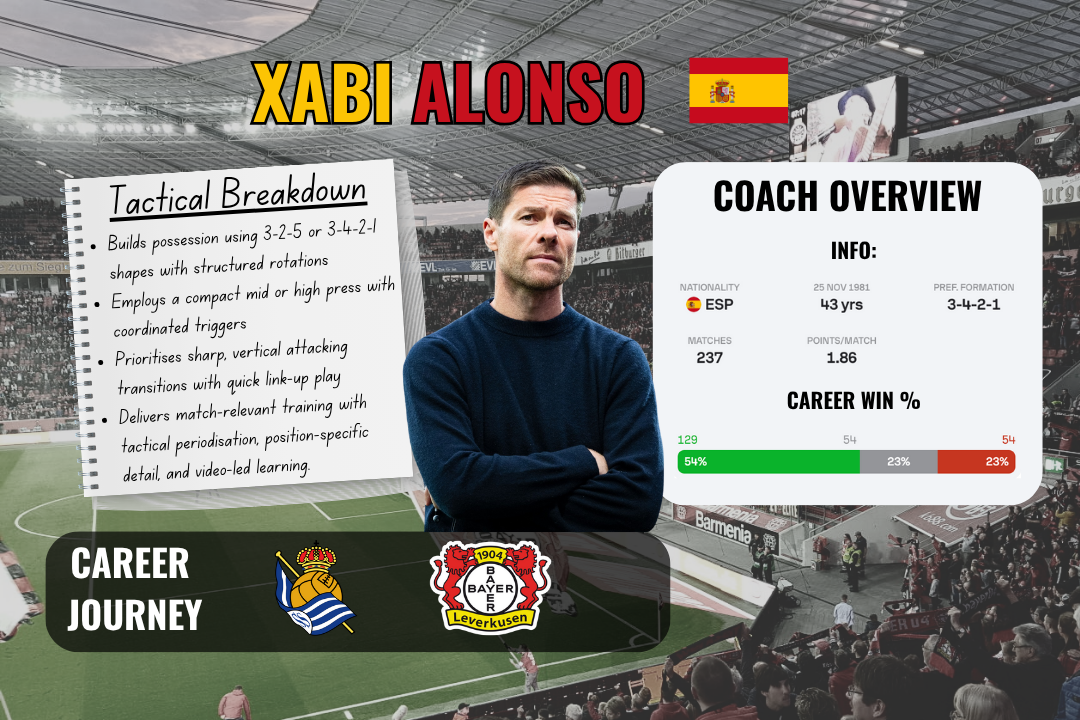
Xabi Alonso
Share
👤 Coach Bio
Xabi Alonso is quickly establishing himself as one of the most forward-thinking coaches in European football. After a decorated playing career that included spells at Liverpool, Real Madrid, and Bayern Munich, and under the tutelage of managers like Rafael Benítez, José Mourinho, and Pep Guardiola, Alonso stepped into coaching with a deep understanding of elite football.
He began his coaching journey with Real Madrid’s youth sides before taking charge of Real Sociedad B, where he helped the team gain promotion to the Segunda División. In October 2022, he was appointed head coach of Bayer Leverkusen, inheriting a struggling side near the bottom of the Bundesliga. Within a year, Alonso had transformed them into one of Europe’s most tactically astute and well-balanced outfits, culminating in a historic unbeaten domestic season and Bundesliga title in 2023-24.
⚽ Playing Philosophy
Alonso's philosophy blends control with adaptability. He builds his teams around positional discipline, intelligent spacing, and ball circulation, but without dogmatic possession. His tactical identity is rooted in fluid structures, positional rotations, and vertical progression. While his teams can dominate the ball, they are equally adept at striking in transition and adapting to the needs of the match.
He values collective movement over individualism, and his training methodology ensures players understand when to move, why they move, and how it affects the structure around them. Alonso's sides are known for their efficiency in exploiting space, whether in settled possession or during quick counters.
🔍 Style of Play
In Possession
Bayer Leverkusen under Alonso frequently shift between a 3-4-2-1 and 3-2-5 shape in possession. The system is designed to create overloads, stretch the pitch, and isolate the opposition's weak points.
- Build-up: Leverkusen often initiate attacks with a back three, supported by a double pivot. Alonso encourages calm build-up through the thirds, using vertical passes and clever positional rotations to unbalance pressing teams.
- Progression: Wing-backs push high and wide to stretch the field, while one of the attacking midfielders drops into midfield to create numerical superiority. Central progression is often avoided in early build-up in favour of wide combinations and then cutting inside during the final phase.
- Final Third: The team typically flood the half-spaces with their dual 10s or advanced midfielders. There is a heavy emphasis on third-man runs, underlaps, and late entries into the box from midfielders like Granit Xhaka or Florian Wirtz.
Out of Possession
Alonso’s teams defend with intensity and intelligence. Out of possession, Leverkusen usually adopt a mid-block 5-3-2 or 5-4-1, depending on the game context.
- Defensive Organisation: Compactness is key. They narrow the field centrally and allow teams to play wide before trapping them along the touchlines.
- Pressing: They initiate pressing cues off backward or square passes. Pressing is coordinated with cover shadows and triggers from the front two.
- Flexibility: Alonso can adjust between aggressive high pressing and disciplined mid-block defending depending on opposition quality and game state.
Transitional Moments
- Defensive Transitions: Upon losing the ball, Alonso’s sides are drilled to counter-press immediately. The nearest 2–3 players engage, while the rest retreat into a structured block to defend space.
- Attacking Transitions: Quick and incisive. The ball is often played forward vertically into space or to a dropping forward to link. Wide players or advancing midfielders provide depth and width on the break. Leverkusen are among the most effective transition teams in Europe.
🧠 How to Coach Like Xabi Alonso
Xabi Alonso’s coaching methodology is rooted in clarity, repetition, and match-relevant scenarios.
- Tactical Periodisation: Alonso emphasises a blend of technical repetition and tactical clarity. Every drill links to an in-game context for example, rondos leading to breaking pressure and shape games leading to line-breaking passes.
- Position-Specific Roles: Players are coached not only on their own role but how it interacts with others. Sessions include freeze moments to correct spacing, timing, and body orientation.
- Game Realism: His sessions consistently simulate the tempo and demands of match conditions. Quick restarts, transition games, and final-third combinations feature regularly.
- Video Analysis: Alonso is detailed in analysis. Players review game phases, understand decision-making patterns, and work on scenario-based planning.
For coaches, replicating Alonso’s style involves clarity in team shape, specific player instructions, high-possession training environments, and heavy emphasis on spatial awareness and transitions.
👥 Player Profiles
Alonso’s system requires intelligent, tactically aware players. He does not necessarily rely on superstars, but on players who can execute his plan with discipline.
- Centre-Backs: Ball-playing defenders with composure under pressure and strong positional discipline. They must be able to break lines and defend space behind.
- Wing-Backs: High work-rate, technical quality, and good timing in wide areas. Must be comfortable both overlapping and underlapping.
- Midfielders: Versatile profiles who can operate as part of a double pivot or in advanced roles. Ability to scan, receive on the half-turn, and execute quick combinations is vital.
- Attackers: Intelligent movement, ability to receive between lines, and create space. Forwards must link play and run beyond the last line. Fluidity and decision-making are more important than raw pace or size.
🔑 Key Takeaways for Coaches
- Prioritise positional discipline: Design training around maintaining structure while encouraging rotations and fluid movement.
- Build game understanding: Use scenario-based drills that teach when and why players should move, not just how.
- Train transitions relentlessly: Make quick decision-making in both attacking and defensive transitions a core part of every session.
- Be adaptable with shape: Don't fixate on one formation. Instead, coach principles that allow players to adapt between 3-2-5, 3-4-2-1, or 5-3-2 as needed.
- Use video as a tool for learning: Break down key moments for individual players and the collective unit. Reinforce teaching points with visual evidence.
- Drill the details: From body orientation in build-up to coordinated pressing angles, Alonso’s system thrives on execution. Small details matter.

